The Costa del Sol has rightfully earned its reputation as a golfing haven thanks to its exceptional golf courses, and year-round fine weather. However, for the golf enthusiast seeking a well-rounded experience beyond the fairways and bunkers of their golf holiday in Spain, this picturesque destination offers a wealth of diverse activities to explore.
Venture beyond the golf course, and you’ll find yourself immersed in a tapestry of cultural gems and culinary delights that perfectly complement the sun-soaked landscapes. In this article, we have highlighted 10 things for you to see and do on your Costa del Sol getaway, ensuring that your visit is not only defined by the perfect swing but also by the richness of the region’s off-course offerings.
Alcazaba
La Alcazaba, an iconic fortress nestled in the heart of Malaga, Spain, is the city’s most important landmark and stands as a testament to the city’s rich history and architectural prowess.
Dating back to the 11th century, this Moorish citadel is a stunning example of Islamic military architecture. Perched on a hill overlooking the Mediterranean Sea, La Alcazaba boasts a strategic vantage point that once safeguarded the city from maritime threats. As visitors ascend its well-preserved walls and towers, they are treated to breathtaking panoramic views of Malaga and its surrounding landscapes.
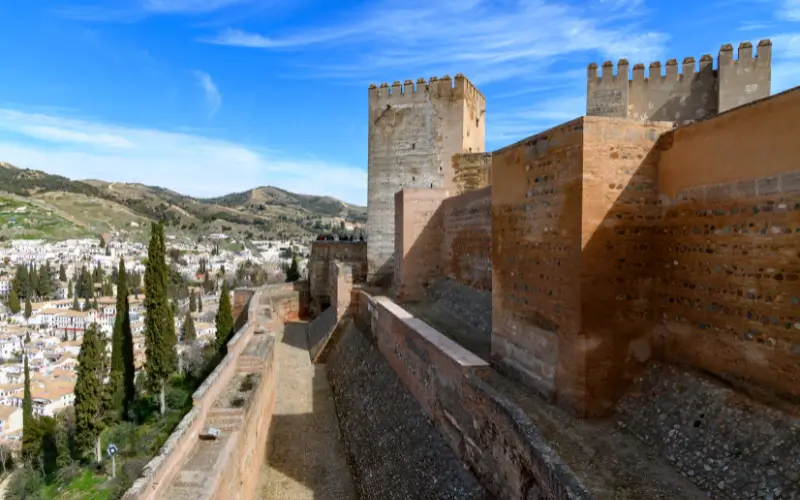
Wandering through the intricate network of courtyards, gardens, and arched pathways within La Alcazaba, visitors can’t help but be transported back in time. The blend of Islamic and Roman influences is evident in the intricate stucco work, horseshoe arches, and lush greenery that grace the complex. The Nasrid Palatial style is particularly prominent in the palace section, where visitors can explore the intricate details of the Patio de los Surtidores, adorned with fountains, and the ornate rooms that once housed Moorish rulers. A visit to La Alcazaba not only provides a glimpse into Malaga’s Moorish past but also offers a serene escape within the historic heart of the city.
Malaga Cathedral
Popularly known as La Manquita, the cathedral of the Encarnación is one of the town’s most important monuments.
The Cathedral is a stunning architectural gem that stands in the city centre, and exemplifies a fusion of Gothic, Renaissance, and Baroque styles. Construction began in the 16th century in the Gothic style, ordered by the Catholic Monarchs, and continued in the 17th and 18th centuries. Its two-towered façade features intricate reliefs and sculptures, showcasing the craftsmanship of the era. Inside, the grand nave, adorned altars, and remarkable artwork, including pieces by artists like Alonso Cano and Francisco Goya, create a captivating atmosphere.
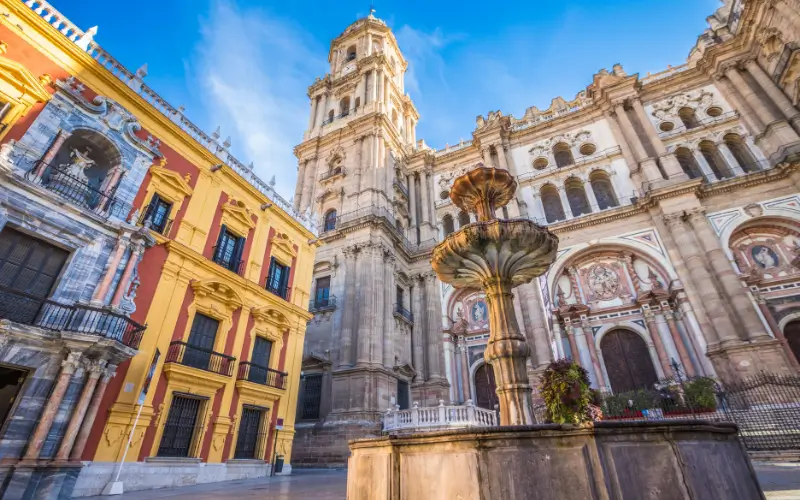
Particularly noteworthy are the meticulously carved choir stalls by Pedro de Mena, adding to the cathedral’s rich artistic and spiritual allure. Malaga Cathedral stands as a testament to the city’s cultural heritage, inviting visitors to immerse themselves in its centuries-old history.
The Cathedral also has its own gardens and a magnificent courtyard that you can explore.
Ronda Wines
Ronda is known for its fantastic wines, popularly known as ‘the Ronda Wines’, that are produced in an area known as the Serrania de Ronda, which forms part of the DO Sierras of Malaga.
To immerse yourself in the experience of exploring different wines, take a visit to the wineries in the Serrania de Ronda. Guided tours take you through the scenic vineyards and state-of-the-art wine-making facilities, culminating in a delightful wine tasting. Enhance your visit with tapas or, in some instances, a more substantial meal, and savour the essence of Ronda’s winemaking tradition.
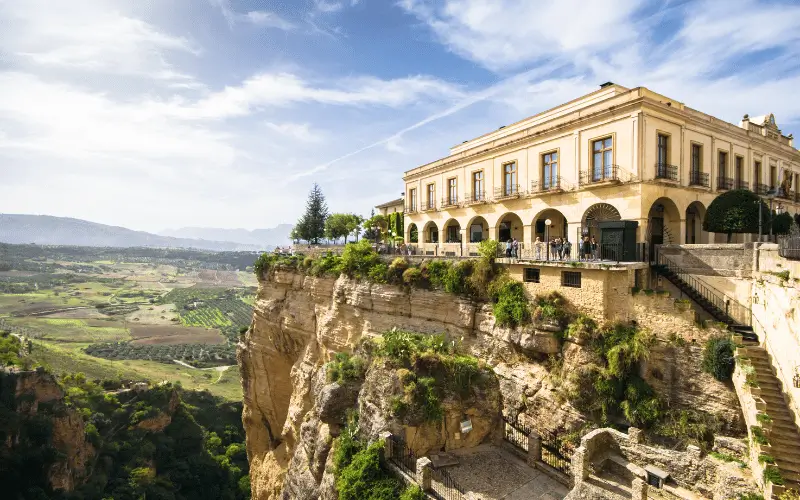
Nestled at over 750 metres above sea level, modern bodegas in this area produce a range of young red wines featuring Romé, Cabernet Sauvignon, Merlot, Syrah, Petit Verdot, and Tempranillo. Meanwhile, white wine enthusiasts can indulge in varieties like Chardonnay, Macabeo, Colombard, and Sauvignon Blanc.
The White Wines categorised as Crianza and Blanca Joven, perfectly complement seafood, salted fish, and fried fish, best enjoyed chilled between 8ºC and 10ºC. On the other hand, the Red Wines, classified as Crianza and Tinto Joven, offer an ideal pairing with meats, pork products, and cheese, best served at 16ºC.
Learn more about Ronda.
Cuevas de Nerja – Nerja Caves
Cuevas de Nerja offers a down-to-earth adventure for all ages. With a network of underground caverns stretching nearly 5 kilometres, it’s home to the world’s largest stalagmite—a colossal 32-metre high column with a 13 by 7-metre base. As you navigate through these caves, you’ll encounter awe-inspiring geological formations that tell a story millions of years in the making.
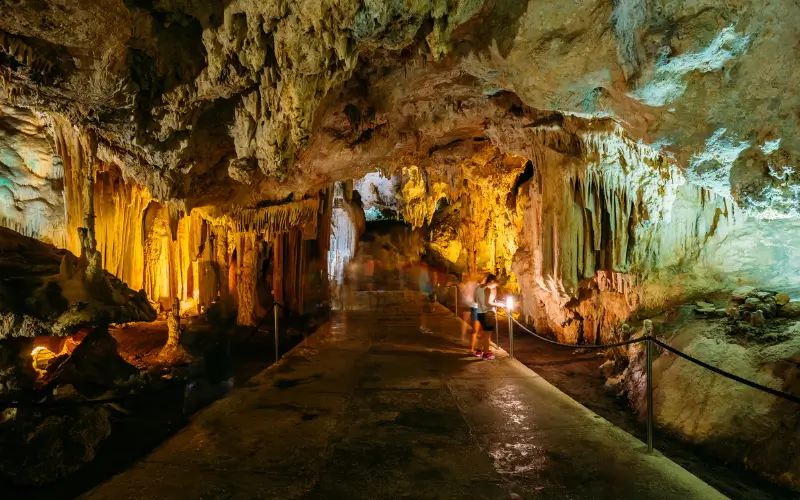
Beyond the impressive formations, Cuevas de Nerja gives you a glimpse into prehistoric times with hidden chambers featuring ancient wall art. While some areas are off-limits for conservation, the Nerja Museum provides a snapshot of this historical artwork.
Discovered in 1959 by adventurous boys near “La Mina,” Cuevas de Nerja invites you to embark on a straightforward exploration. Uncover the mysteries of the past, appreciate the natural wonders below the surface, and make lasting memories with your family. Cuevas de Nerja isn’t just an underground experience, it’s a practical journey that reveals the hidden gems of the Costa del Sol.
Marbella Old Town
Marbella’s Old Town, a charming haven on the Costa del Sol, invites you to step back in time with its narrow cobblestone streets and whitewashed buildings adorned with vibrant flowers.
At the heart of this historic district lies Orange Square, or Plaza de los Naranjos, a lively plaza surrounded by fragrant orange trees.
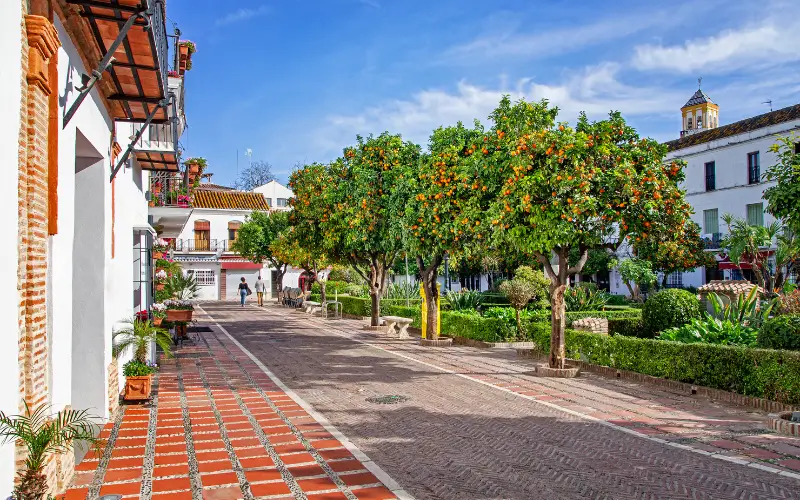
Orange Square isn’t just a picturesque spot; it’s a bustling centre of activity. Cafés, restaurants, and shops line the square, offering an ideal setting to savour local flavours and soak in the lively ambiance. The historic architecture, including the Town Hall and the Chapel of Santiago, adds an authentic touch to the experience.
Amidst the narrow streets, Orange Square is a hub of creativity with artisanal shops and galleries showcasing local talents. Whether you’re drawn to history, cuisine, or local artistry, a visit to Marbella’s Old Town and Orange Square promises a delightful blend of the past and the present. Take a leisurely stroll, indulge in local treats, and let the timeless allure of Marbella transport you to a place where history comes alive.
The Historic Botanical Garden of La Concepcion
Tucked away in Malaga is the Historic Botanical Garden of La Concepción, an English landscape garden that was established in 1855, that promises a serene journey through time. This lush oasis showcases a curated collection of flora from around the world, making it a must-visit for nature lovers and history enthusiasts.
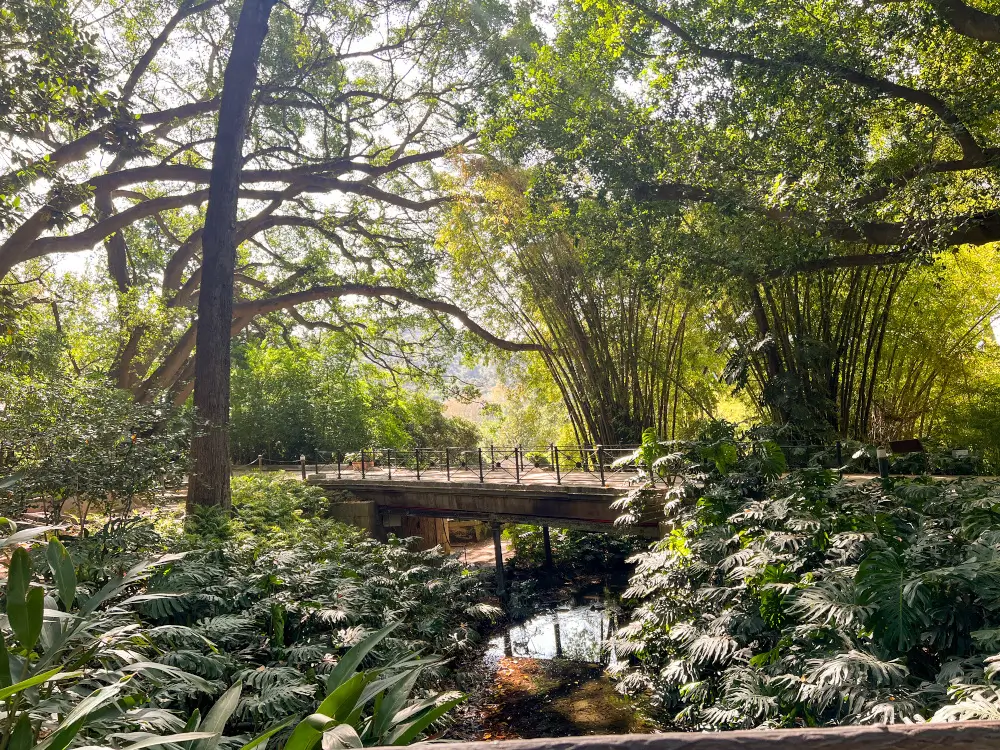
As you wander through the garden’s paths, you’ll encounter iconic structures like the Iron Bridge and Victorian-style glasshouses, adding a touch of nostalgia to your stroll. The garden is not just a visual delight; it’s an educational experience with labeled plants and knowledgeable staff offering insights into the fascinating world of botany.
Take a moment to escape the hustle and bustle, meander through shaded avenues, and breathe in the fragrant air. La Concepción invites you to immerse yourself in its timeless beauty and discover the rich history that makes this botanical garden a true gem in Malaga.
El Teatro Romano
Nestled in the cultural heart of Málaga city, at the foot of the iconic Alcazaba fortress, lies El Teatro Romano – the oldest monument in Málaga. This historic site, dating back to the first century BC under Emperor Augustus, stands as a testament to the city’s rich past.
Accompanied by the Centro de Interpretación, a visitors’ centre that offers insights into the history of the ruins and their excavation, El Teatro Romano provides a captivating glimpse into the bygone era of Roman civilization. Built for performances that spanned from the first to the third century AD, the amphitheatre fell into ruin for centuries, only to be repurposed as a quarry by Moorish settlers in the 8th century.
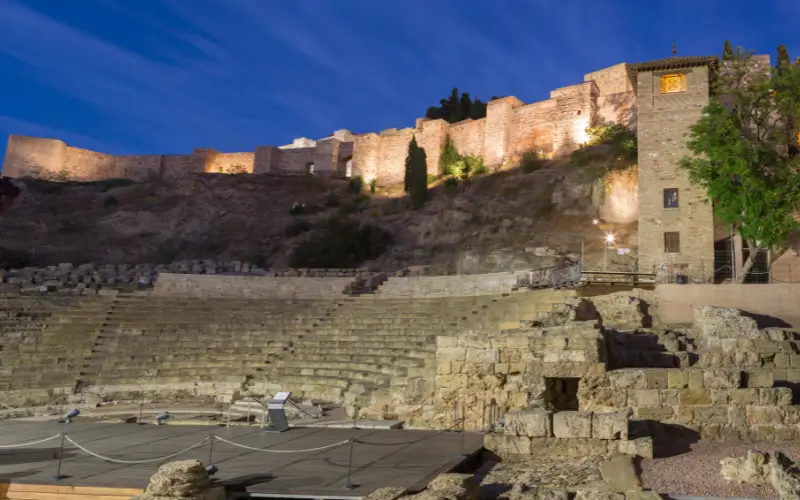
Rediscovered in 1951 during the construction of Casa de Cultura, the theatre’s excavation unearthed its fascinating history. Despite facing challenges during the restoration due to missing pieces integrated into the neighbouring Alcazaba’s foundations, El Teatro Romano triumphantly reopened to the public on September 15, 2011, after 27 years of meticulous reconstruction.
Now a living testament to Málaga’s enduring heritage, the amphitheatre seats 220 spectators and welcomes visitors year-round. In the summer, it comes alive with open-air performances, providing a unique opportunity to experience the ancient allure of El Teatro Romano. As you step onto its historic grounds, you embark on a journey through time, connecting with the legacy of a monument that has witnessed millennia of history and culture.
Stupa of Enlightenment Benalmádena
Perched high in the hills above the Benalmádena coast, the Benalmádena Stupa stands as the largest Buddhist stupa in the Western world, symbolising peace and prosperity. In 1990, Buddhist master Lopon Tsechu Rinpoche first visited Spain, later returning to build a stupa in Vélez Málaga. His connection with Spain deepened over the years, leading to the idea of creating the largest stupa in Benalmádena.
In 2003, the vision became reality, and the stupa was inaugurated in a ceremony featuring monks in traditional dress. Visible from the A-7 motorway, it now stands as a symbol of world peace.
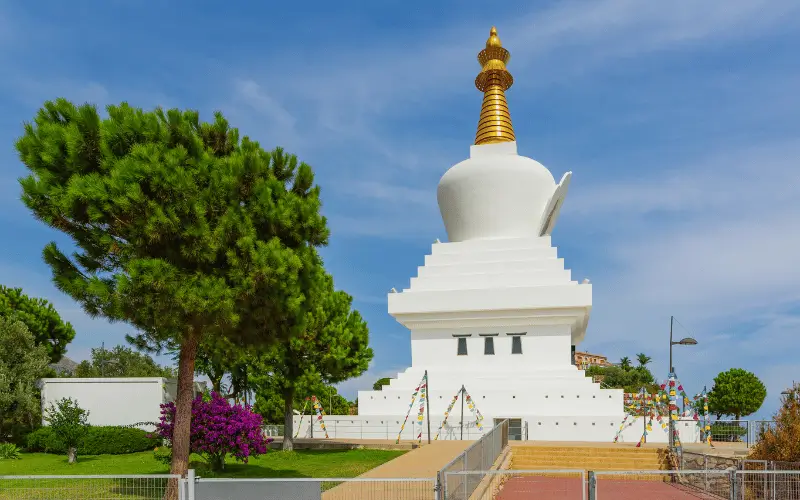
Open to the public, the stupa invites visitors to explore its serene surroundings. A small shop offers literature on Buddhism, along with traditional artefacts from the Himalayas. During the summer, a quaint café provides a peaceful spot to reflect while enjoying breathtaking views.
The Benalmádena Stupa not only represents a cultural and spiritual landmark but also invites all who visit to experience a moment of tranquillity and connection with the rich tapestry of Buddhist teachings.
The Mirador del Puente Nuevo
Nestled on the Tagus River, the Mirador del Puente Nuevo stands tall at 98 metres, making it the best viewpoint in Ronda, Andalusia. This architectural marvel is not only the most visited monument in the city but is also celebrated as a true pharaonic work of art.
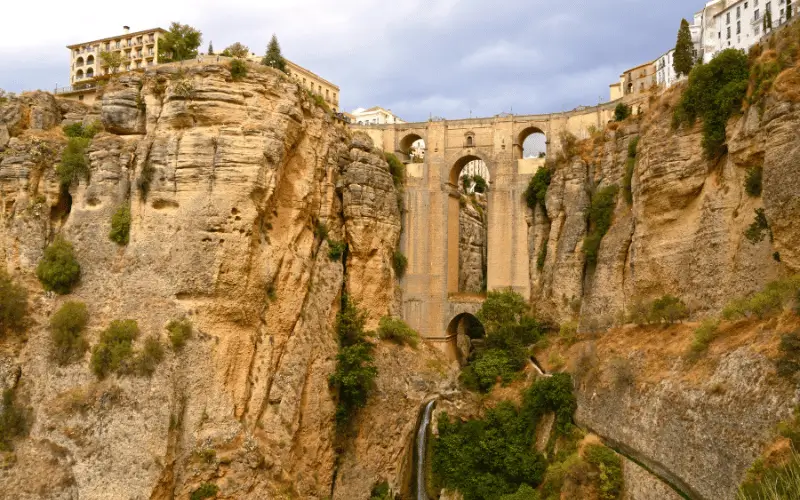
From this elevated vantage point, visitors are treated to breathtaking views that highlight the stark contrast between the modern cityscape and the historic charm of old Ronda. The bridge offers more than just architectural prowess; its balconies provide a mesmerising perspective, allowing you to witness houses seemingly hanging over the precipice.
Considered a must-visit, Mirador del Puente Nuevo is more than a viewpoint; it’s an immersive experience that captures the essence of Ronda’s unique blend of modernity and history. Explore its heights and be captivated by the awe-inspiring scenery that unfolds before you.
Mijas Pueblo
Nestled in the picturesque hills of Andalusia, Mijas Pueblo beckons visitors with its timeless charm and breathtaking vistas. This quintessential Spanish village, just a short drive or bus journey from the bustling coastal resorts, offers a serene escape into the heart of traditional Andalusian beauty.
As you wander through the narrow cobblestone streets, you’ll find yourself surrounded by whitewashed buildings adorned with vibrant flowers, creating a postcard-perfect scene at every turn. Mijas Pueblo seamlessly blends its Moorish and Andalusian influences, making it a captivating destination for those seeking an authentic Spanish experience.
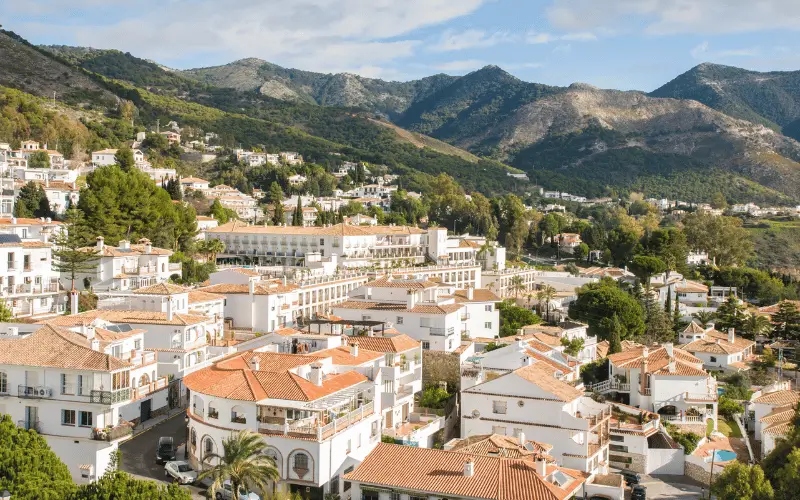
The village is dotted with inviting cafes, boutique shops, and art galleries, inviting you to take a leisurely stroll and soak in the relaxed atmosphere. And every Wednesday at 12 noon, in the Plaza de Virgen de la Pena, you can also experience the joy of Flamenco, as local performers put on a free show.
Mijas Pueblo also boasts stunning viewpoints that offer panoramic views of the Mediterranean Sea and the surrounding landscapes. The Plaza de la Constitución, with its bustling local market and vibrant ambiance, is a central hub where you can immerse yourself in the lively spirit of the village.
Whether you’re savouring local delicacies in a traditional tapas bar, exploring the historic Chapel of San Sebastián, or simply enjoying the tranquillity of the village, Mijas Pueblo captures the essence of Andalusia in a way that leaves a lasting impression. This charming escape is a must-visit for those looking to discover the true soul of southern Spain.









